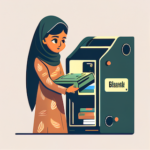In 2018, Beyond Innovations & Technologies successfully implemented an IoT-based RFID solution for automating the American International University – Bangladesh (AIUB) library. This retrospective case study summarizes the project, exploring the client’s needs, challenges, solutions provided, and lasting impact on the library’s operations.
Understanding the Potential of IoT in Libraries
The Internet of Things (IoT) has revolutionized library services and operations in the 21st century. Libraries have harnessed the power of IoT to create innovative solutions and provide enhanced user experiences. In 2018, the AIUB library project demonstrated the potential of IoT technologies in improving library services. By implementing IoT solutions, such as location-based recommendation services, real-time location guidance, and data-driven insights into space usage, libraries can meet the high service expectations of users while addressing privacy and security concerns.
Services Provided:
Library Management Solution, Native Android Mobile Application, Supply of IoT/ RFID devices, other associated hardware supply, deployment and integration with software solutions and maintenance.
Client Overview
American International University – Bangladesh (AIUB) is a reputed private university in Dhaka, Bangladesh offering various graduate and undergraduate engineering and business studies programs. With a sprawling campus and a vast library, AIUB sought to streamline its library management system and enhance security and accessibility for its users in 2018.
Deployment Year: 2018
Location: Dhaka, Bangladesh
Challenges
AIUB faced several challenges with its existing library management system:
- Inefficient inventory management and tracking of library materials.
- Time-consuming and labor-intensive check-in and check-out processes.
- Limited security measures to prevent theft and unauthorized access to library resources.
- Need for more data on the usage and circulation of library materials.
Solution
Beyond Innovations & Technologies provided a comprehensive IoT-based RFID solution, incorporating the following hardware and software components:
- RFID Gate Reader: The RFID gate reader is installed at the library entrance/exit for efficient theft detection and prevention. It supports Electronic Article Surveillance (EAS), Application Family Identifier (AFI), and EAS+AFI anti-theft models. Two gate readers are used to create one aisle, ensuring comprehensive monitoring of library materials entering or leaving the premises. The gate reader accurately identifies RFID-tagged items, significantly reducing false alarms and maintaining a secure library environment.
- RFID Desktop Reader: This all-in-one device is used by library staff for book check-in and check-out procedures. With a read range of up to 30 cm, the RFID desktop reader streamlines circulation operations by quickly and accurately scanning multiple RFID tags simultaneously. This enhances the efficiency of library staff and provides a smoother user experience for patrons.
- The tag dispenser is an automatic digital label-sticking machine designed to make attaching RFID labels to library materials more convenient and efficient. It simplifies the task of labeling books, magazines, and other resources, ensuring accurate and consistent placement of RFID tags on all library items.
- Book Drop Station: The book drop station is designed for easy and convenient book returns by patrons. Its spring-lifting structure reduces the impact of falling books, minimizing potential damage to library materials. By allowing users to return items directly, the book drop station helps to reduce staff workload and streamline library operations.
- Android-based Handheld Reader: This versatile shelf management device assists in the listing, searching, sorting, error correction, and inventory tasks. The Android-based handheld reader enables library staff to efficiently manage library materials on shelves, quickly identify misplaced or missing items, and make necessary real-time adjustments.
- UHD RFID Library Label with EAS Function: These ultra-high-density RFID library labels ensure secure tracking and monitoring of library materials. Equipped with an EAS function, the tags provide an additional layer of security, helping to prevent theft and unauthorized removal of library resources.
- Self Check-in/Check-out Devices: These devices allow borrowers to manage their transactions independently, such as checking out or returning books. By offering self-service options, libraries can reduce staff workload, improve user experience, and provide patrons with more efficient and convenient services.
The software solution for the IoT-based intelligent library management system was developed using the open-source integrated library management software KOHA as a foundation. This choice allowed the team to leverage the robust features and flexibility of KOHA while tailoring it to the specific needs of the intelligent library system.
To create a custom solution, the software division, in collaboration with VUES, utilized a technology stack comprising ASP.net, mySQL, JSON, and Java for the Android application. Each component of the stack served a specific purpose in the overall system:
- ASP.net: A robust web application framework developed by Microsoft, ASP.net was used to create dynamic, interactive, and data-driven web applications for the intelligent library system. This allowed the development team to build a responsive, user-friendly interface for library staff and patrons.
- MySQL: As one of the most popular open-source relational database management systems, MySQL was chosen to store and manage the library’s data. This included information about library materials, patron accounts, and transactions, ensuring that data was organized, secure, and easily accessible.
- JSON: JavaScript Object Notation (JSON) is a lightweight data-interchange format that is easy to read and write. It facilitated data exchange between the server and the client-side application, enabling seamless communication and data transfer within the innovative library system.
- Java: For the development of the Android application, Java, a widely-used programming language, was utilized. This enabled creation of a versatile and feature-rich mobile application that could integrate with the IoT-based intelligent library management system, providing library staff and patrons with a convenient and accessible way to interact with the design on their smartphones or tablets.
1: System flow of the integrated Library Management Solution

Impact
- Enhanced inventory management and streamlined book tracking: The IoT-based RFID solution improved the AIUB library’s inventory management by providing real-time data on the location and status of books and other materials. This made it easier for library staff to locate misplaced items and conduct inventory checks more efficiently. Streamlined book tracking also reduced the time spent on finding materials, leading to increased staff productivity and better patron services.
- Automated check-in and check-out processes, reducing labor costs and increasing user satisfaction: The integration of RFID technology with IoT devices enabled automatic check-in and check-out processes, allowing patrons to manage their transactions independently. This reduced the workload on library staff, resulting in lower labor costs, and let them focus on other essential tasks. Moreover, the convenient and efficient self-service options led to increased user satisfaction and more positive library experiences.
- Improved security measures to prevent theft and unauthorized access to library resources: The IoT-based RFID solution incorporated advanced security features like EAS (Electronic Article Surveillance) and AFI (Application Family Identifier) that helped prevent theft and unauthorized access to library materials. These features ensured secure tracking of library resources and triggered alerts in case of any security breach, providing an added layer of protection for valuable library assets.
- Data-driven insights into library materials’ usage and circulation enable better resource allocation and planning: The intelligent library management system collected valuable data on the use and circulation of library materials, providing library staff with insights into patron preferences, high-demand items, and underutilized resources. This information allowed the library to make data-driven decisions on resource allocation, acquisitions, and planning, ensuring that its collection was optimized to meet the needs and interests of its users.
In conclusion, implementing the IoT-based RFID solution at the AIUB library demonstrates the transformative potential of IoT technologies in enhancing library services. By addressing privacy and security concerns, libraries can continue to explore innovative ways to integrate IoT solutions into their operations, ultimately improving user experience and overall efficiency.
Looking back, implementing the IoT-based RFID solution at the AIUB library showcases the transformative potential of IoT technologies in library services. By addressing privacy and security concerns, libraries can continue to explore innovative ways to integrate IoT solutions into their operations, ultimately enhancing user experiences and improving overall efficiency.







